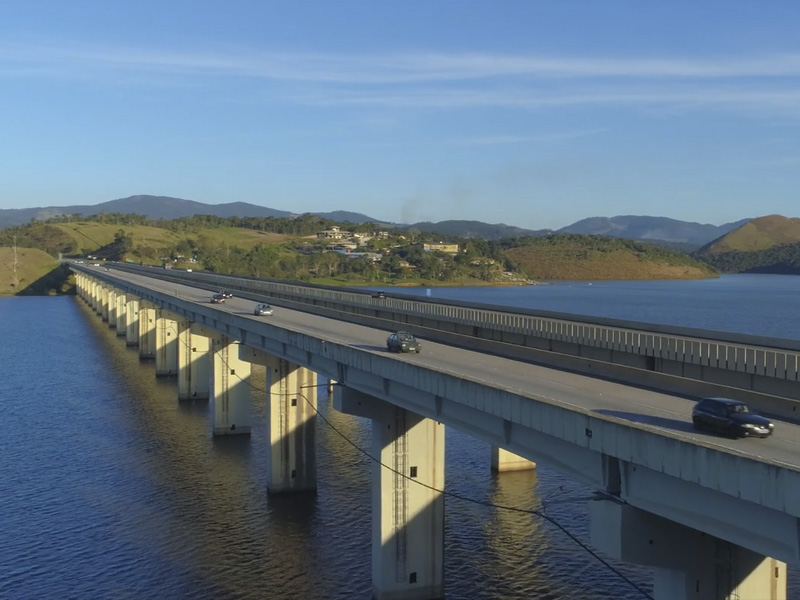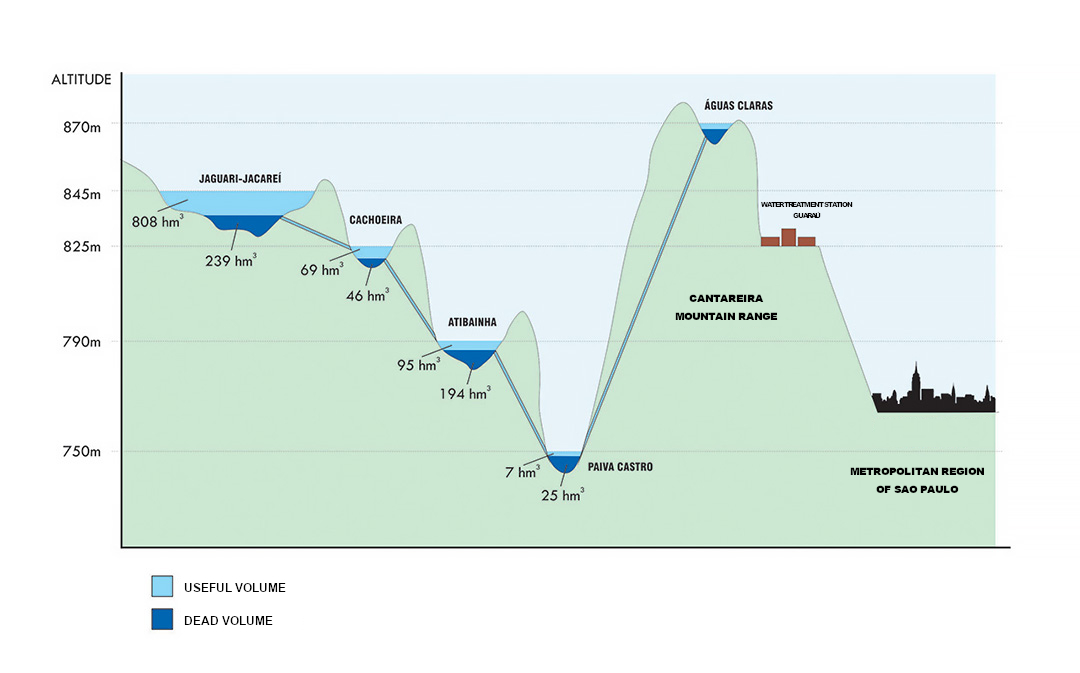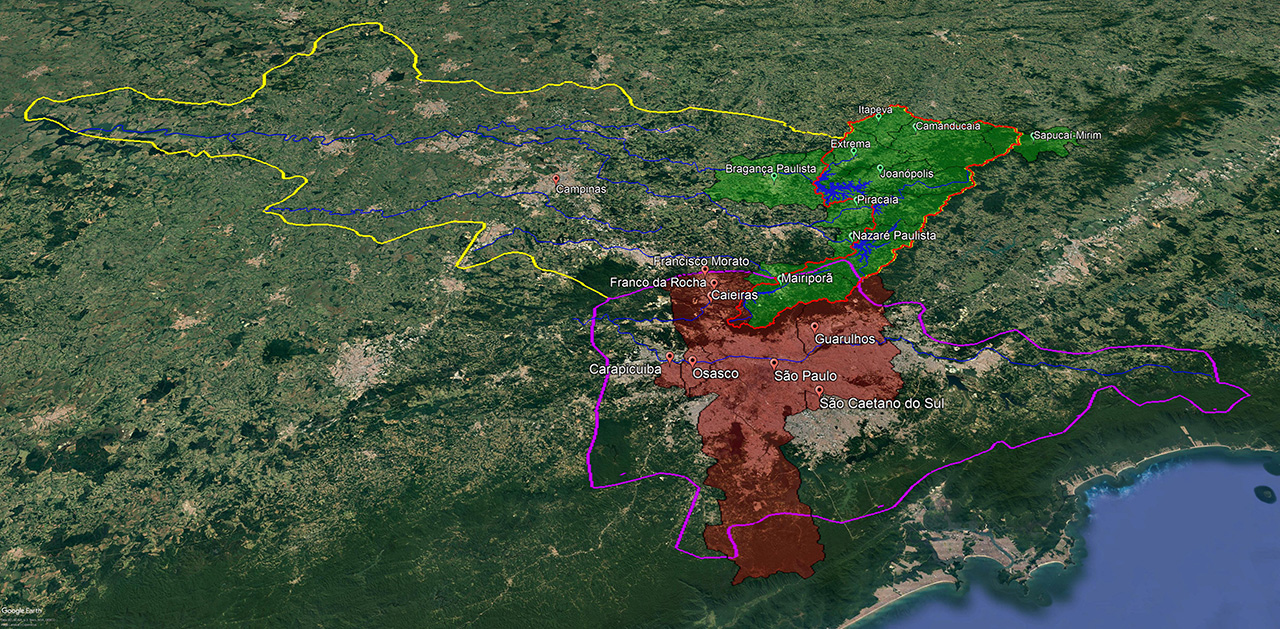The Cantareira System guarantees the water supply to the metropolitan regions of São Paulo, Campinas, and Piracicaba
It is possible to leave the city of São Paulo and, in less than one hour and a half by car, reach two of the five reservoirs that compose the Cantareira System: Paiva Castro, in Mairiporã, and Atibainha, in Nazaré Paulista. As there are no signs, many people are unaware that the water seen from the window of the car or bus is the same that reaches the taps of so many families in the metropolitan region of São Paulo.

Atibainha Reservoir, located in a section of Rodovia D. Pedro I, in Nazaré Paulista
Paiva Castro, in Mairiporã, is the last reservoir of the Cantareira System before the water enters the Guaraú Treatment Station in São Paulo. The Atibainha, in Nazaré Paulista, is the penultimate one after a journey that passes through the Cachoeira reservoir, in Piracaia, in addition to two others in Bragança, Jaguari, and Jacareí.

Interconnection of Cantareira System reservoirs (ANA/DAEE 2013*)
* Reference data on the granting of the Cantareira System V.01_114p
Where does so much water come from?
Water is not originated in any of these reservoirs. Much of it comes from springs located in 12 municipalities, four of them in the State of Minas Gerais (Camanducaia, Extrema, Itapeva and Sapucaí-Mirim), and eight in the State of São Paulo (Bragança Paulista, Caieiras, Franco da Rocha, Joanópolis, Nazaré Paulista, Mairiporã, Piracaia and Vargem). Water travels from springs, streams, and rivers to the nearest reservoir.

The municipalities that receive water from the Cantareira are in red. Those in the System’s area are in light green.
The lines show the Cantareira System (green line); the PCJ basin – Piracicaba, Capivari, and Jundiaí rivers (yellow line); the Alto Tietê basin (purple line).

